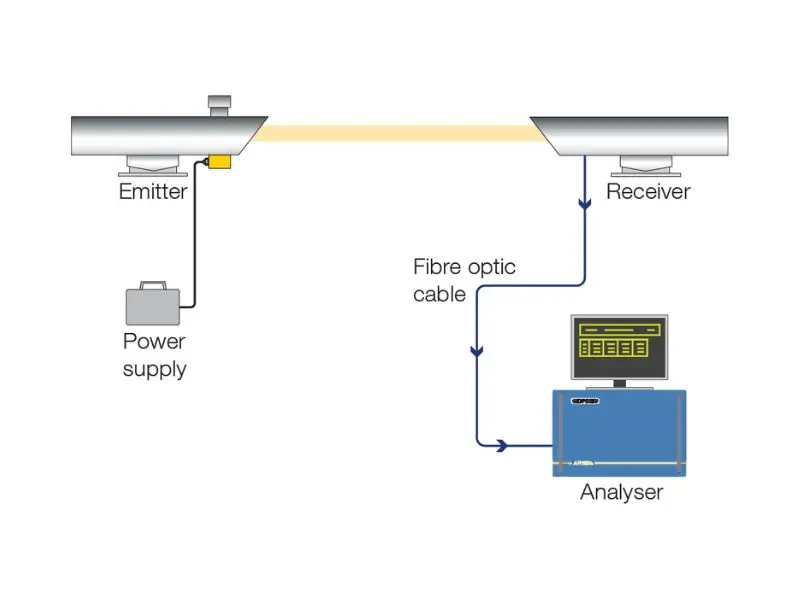OPSIS System 300 includes emitter, receiver, optical fibre, and DOAS analyser. The system is offered in three basic versions:
- System 300BASIC for monitoring the levels of NO2, SO2, and O3
- System 300BTX for measuring benzene, toluene and xylene levels
- System 300EXT which combines the measurement capability of BASIC and BTX.
The systems can be supplemented with additional gases, more measuring paths, and also sensors and other accessories, both when ordering and afterward.
How it works
Each monitoring system is built around an analyser. Its task is to measure the absorption of certain wavelengths of light coming from the monitoring path and use this to calculate the levels of various compounds, such as NO, NH3, NO2, SO2, O3, benzene, toluene, styrene, and formaldehyde.
The AR500 is the most common type of analyser. It operates in the ultraviolet wavelength range and the technique is then called UV-DOAS. When monitoring in the infrared range, an AR550 analyser based on FTIR-DOAS technology is often used. In some cases, IR measurements can also be made with an analyser that is essentially of the UV-DOAS type. It is then called AR520.
The DOAS technology is based on the emission of white (broadband) light in a narrow beam from a xenon lamp (emitter) and its capture by a receiver. Along the beam of light, which can be several hundred metres long, different types of pollutants absorb different wavelengths of light. It is this absorption that is measured in the analyser. The open beam of light is also called the monitoring path because that is where the monitored concentrations of air pollutants are found.
OPSIS offers several different products to form the monitoring path. The ER110, ER120N, and ER150 consist of separate emitter and receiver units. The ER120 combines the emitter and receiver in the same unit. A reflector (RR090) ensures that the emitted light is sent back to the ER120 unit. The choice of ER model depends on the length of the measurement path and the conditions at the installation site.







